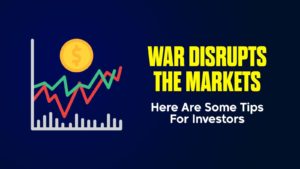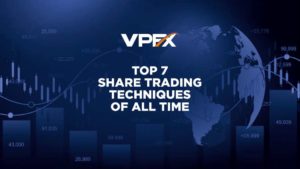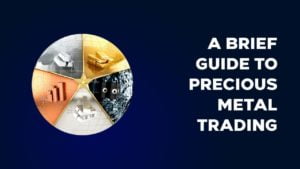A helpful tool among CFD traders is leverage trading. It may assist investors in growing their money exponentially, maximizing profits on even tiny price movements, and increasing their access to the markets they want to be in. Leverage, however, may work both for and against you, so be aware of this. When stock prices move in your favor, you stand to make amplified profits, but when markets change against you, you equally stand to lose amplified losses. To handle a much bigger trade place in the market while using leverage, you must invest a “small quantity” of money, and the paltry sum is alluded to as a “margin.” The level of leverage a broker provides is subject to the regulatory requirements it satisfies in each or all countries in which it is authorized to offer trading services.
Leveraged trading requires a small portion of the total position to be invested by the trader. This may vary based on the amount of leveraged the broker provides and the amount of leverage the trader wants to use. It strongly depends on regulatory bodies regulating the internet trading market in that country.
Additionally, traders’ usage of leverage is influenced by their degree of expertise, investment objectives, risk tolerance, and the fundamental market they are trading in. Professional traders often utilize leverage aggressively, while novice and less skilled traders are typically encouraged to use leverage cautiously. Additionally, cautious traders often utilize the least leverage in forex, but risk-taking traders may employ leverage flexibly.
The kind of market transacted may also influence how much leverage brokers can use. Leverage levels may be increased when trading less volatile commodities, for example, the EURCHF pairing, that doesn’t see significant price swings, as opposed to turbulent markets, including Gold & Bitcoin
Leverage ratios show how much a position is worth compared to the needed investment. Market participants at VPFX may use leverage up to 30:1 while transacting. This, however, differs according to the asset type you were trading and your jurisdiction.
For example, 400:1 leverage allows you to manage a $100,000 trading position on the stock market with only $250! Accordingly, a market price shift of 1 percent inside the favour will gain $1,000 (1 percent) of the respondents $100,000). Without using leverage, a favorable price movement over 1% would provide just a profit of $2.5. In other words, your trading positions’ earnings and losses were multiplied by 400. Because of this, the phrase “leverage is a two-edged sword” is frequently used. Profits are increased when trading with leveraged, but losses may also be quite costly.
It is straightforward to lose more cash than your initial investment when dealing with a level of leverage. At VPFX, however, one will provide guaranteed debit protection, which ensures that you will never lose more money than is already in your trade outstanding balance. Additionally, you may practice without risk on a sample trading before investing actual cash and use a classic calculator to predict the likely results of a transaction before they enter it.
Margin Trading: What Is It?
Margin is the sum of capital a broker permits a trader to deposit to enter a much larger market position, as previously mentioned. In essence, it is a non-refundable deposit that the broker is holding. Market price variations affect margin requirements while keeping trading positions and vice versa. Most platforms will offer information about the various margin requirements in your brokerage account. Here are the meanings of the different terms and margin definitions:
The Account Balance
The amount used as trading capital in the account is shown here and serves as your virtual trading bankroll.
Required Margin
This is the sum previously stated as the “deposit” that the broker wants you to make to hold a trading position on the market. It is often described in percentage form. For instance, the margin need is 1% when you have a leverage ratio of 100:1. The margin need is 0.25% when you employ 400:1 leverage.
Margin used
To enable you to maintain your open trading positions, your broker will hold this sum of money as “security.” The cash is still technically yours, but you won’t have access to it until all available jobs have been filled.
Available Margin
This is the amount of money within your brokerage account that may be used to begin taking new positions on the market.
A Margin Calls
When your margin level is below the necessary level, the broker will notify you through a “margin call.” This is the call (notice) that traders fear receiving. When trading losses surpass (or are close to exceeding) your utilized margin, a profitability call is made. To maintain open trades, customers are effectively requested to deposit additional cash to their brokerage account whenever they get a margin call. If you don’t, the broker will continue to cancel the open position immediately. When your active trades have lost more than 80 percent of the value of your current account, for example, a margin call threshold of 20% signifies that the broker will alert you to a margin call.
Leveraged Trading: Benefits
Loan with No Interest
In essence, leverage is a credit your broker gives you to enable you to enter the market with a more significant stake. You may use this “loan” any way you choose while trading since it is not subject to conditions such as interest and commission.
Greater Profits
Through leverage, traders may increase the rewards from successful transactions. Profits are generated from the trading position that is managed, not from the margin that is deferred. This implies that traders may generate significant returns even if the underlying assets only experience little price changes.
Fighting Low Volatility with Mitigation
Market price movements often take place in low- and high-volatility periods. Because profits come from price changes, most traders prefer to trade in highly turbulent markets. This implies that since there is no price movement during these times, traders may find them very unpleasant. Fortunately, traders who use the best leverage for forex trading may be able to make more significant returns, including during these ostensibly “dull” periods of low volatility.
For each of the several products offered by VPFX, the best leverage for forex trading has a distinct level of leverage that might vary depending on the trading system you choose. Before you begin trading, you must be aware of the available leverage. Always check your account balance to ensure you have adequate equity, can continue trading without interruption, and prevent a margin account. Finally, the VPFX functionality merits a test run. If you put it up ahead of time, it is a risk management tool that protects your available positions.





